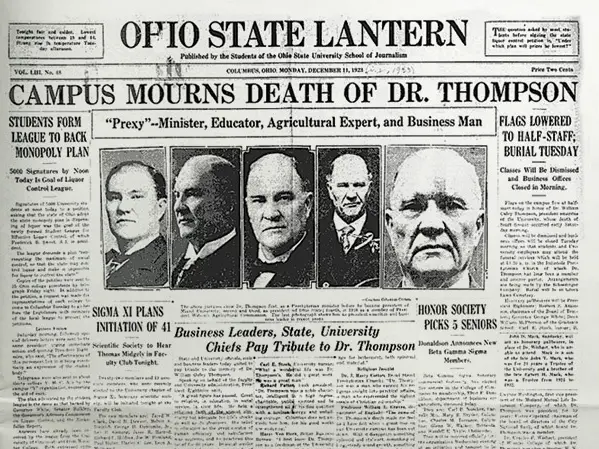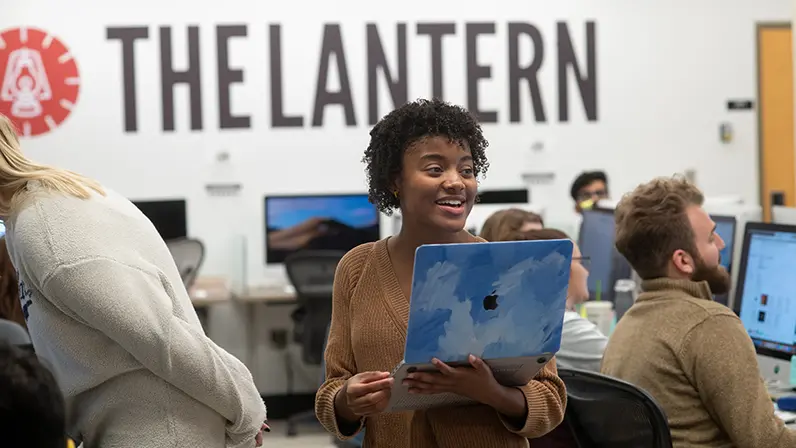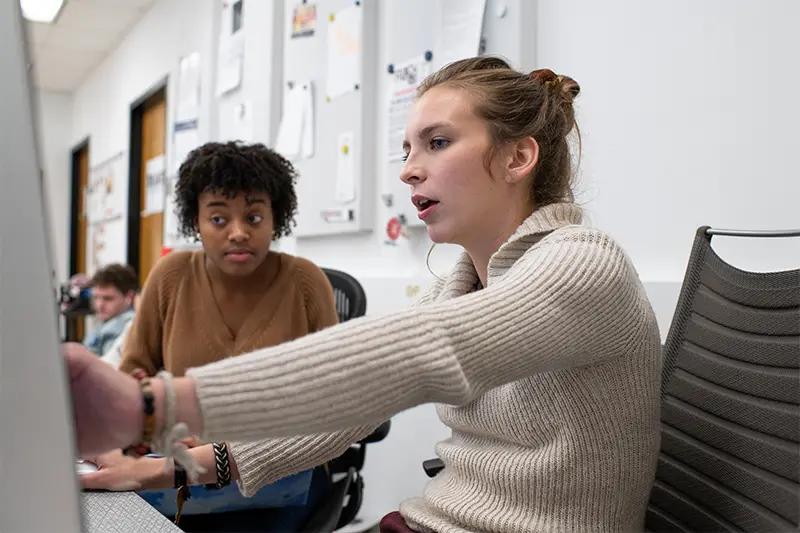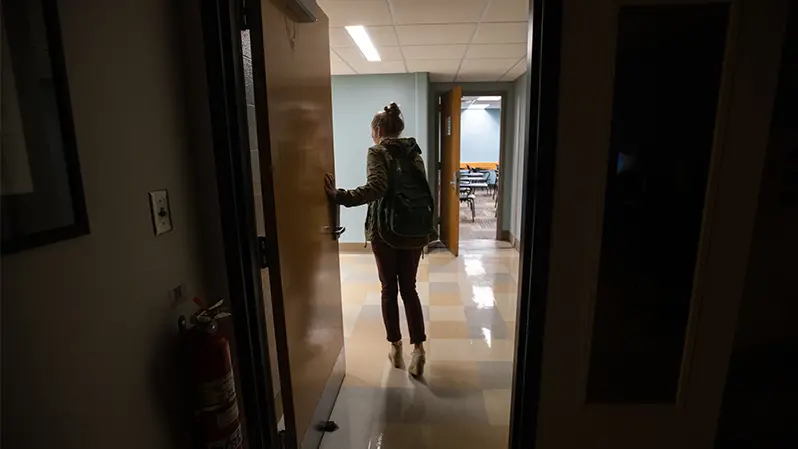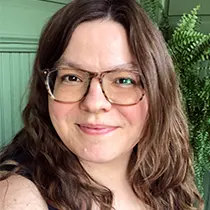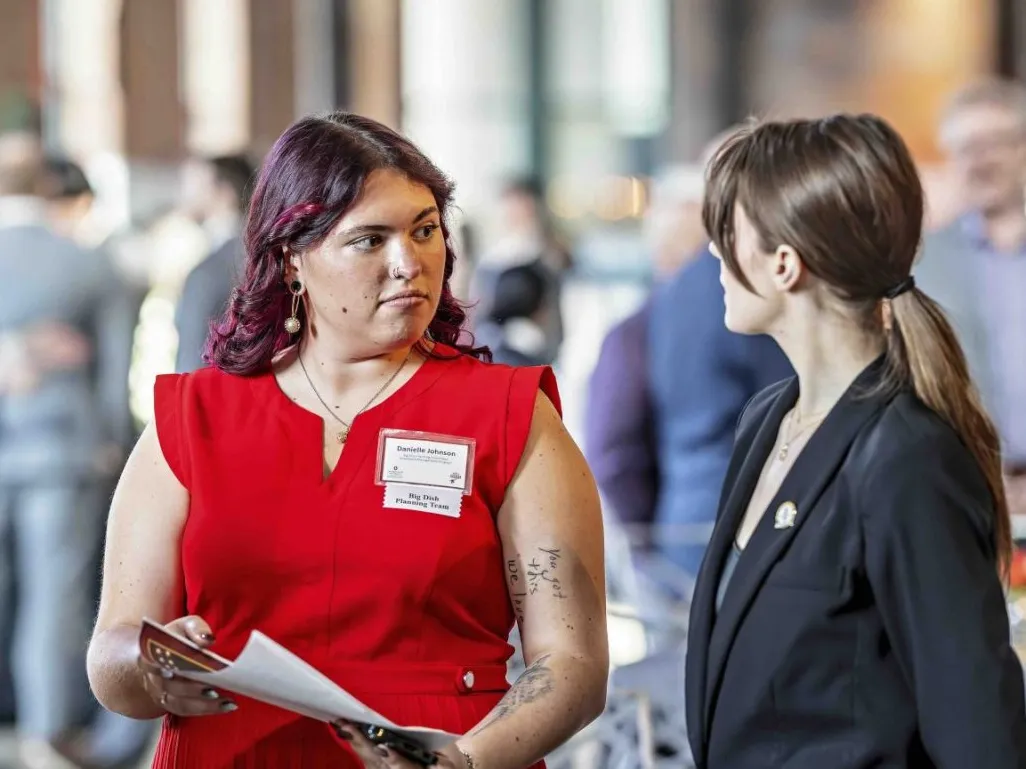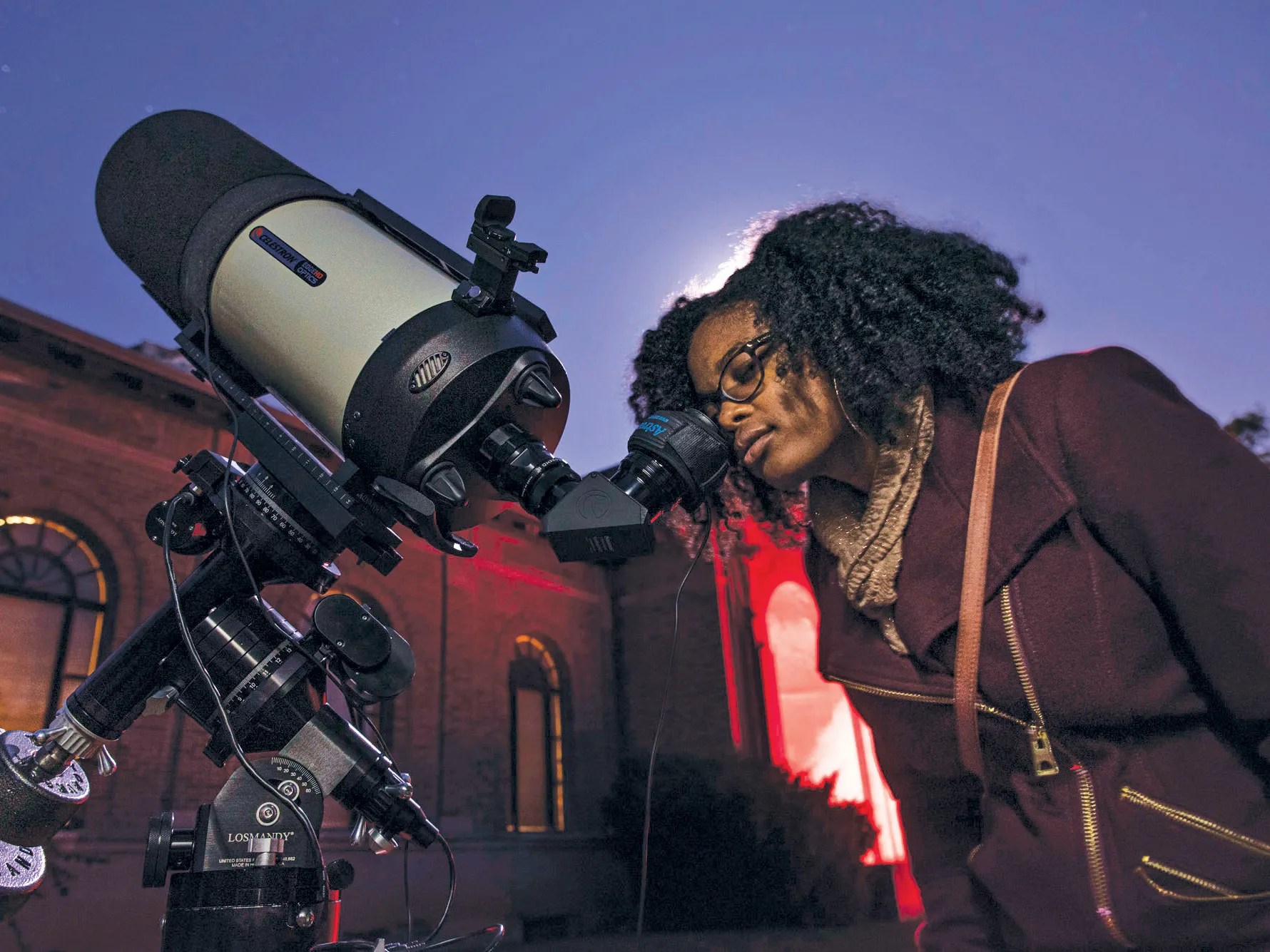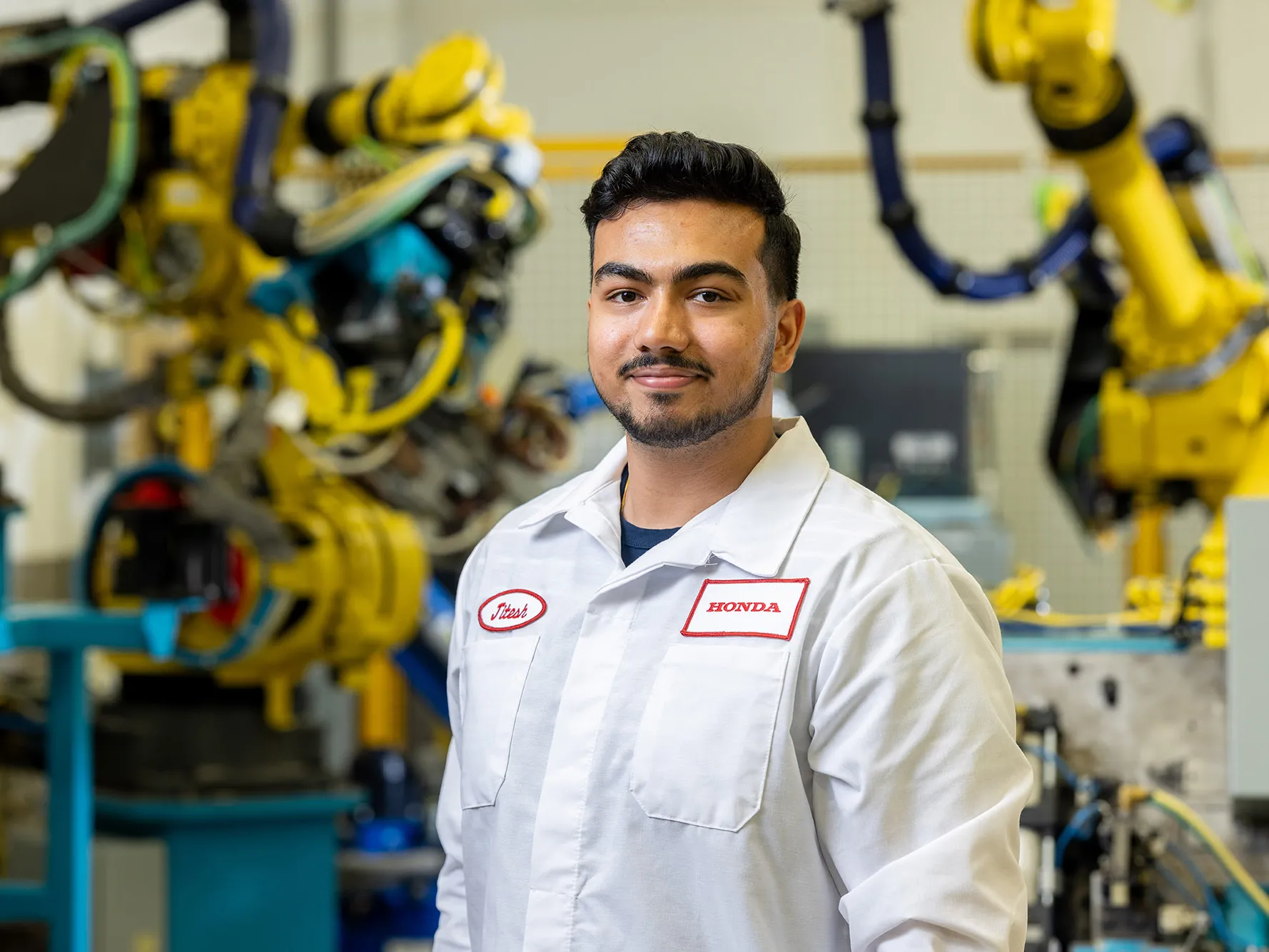
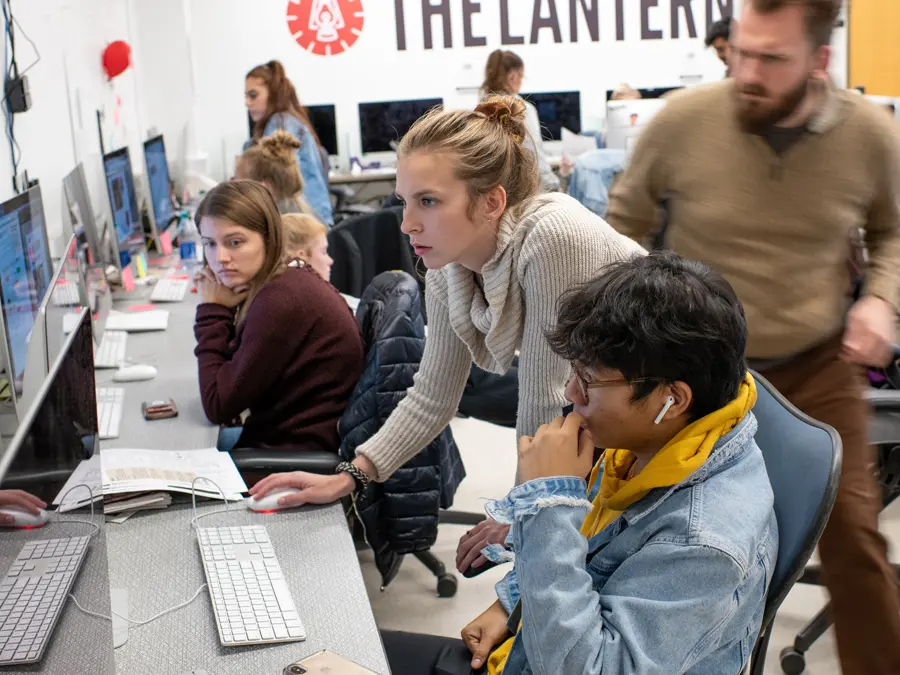
The Lantern: Scarlet, gray and read all over
Since 1881, students producing The Lantern have been informing, entertaining and challenging students, faculty and administrators in nearly equal measure. Go inside the newsroom on a publication night and see how the outlet’s 24 editors fill a newspaper with stories in a matter of hours — all while balancing the demands of classes and college life.
A tradition since 1881
Since its charter was enacted in 1881, The Lantern has served as a laboratory newspaper produced by students. The independent newspaper receives no university funding, Hunt says, but Ohio State has long been supportive of The Lantern as an institution. The operation has benefited from donor support.
“They value tradition here, and The Lantern has been a big tradition here at the university for a long time,” Hunt says.
Over the years, The Lantern has cycled through various iterations of print and digital publication. These days, it’s a digital-first operation that publishes print editions on Tuesdays and Thursdays and posts stories online throughout the week. The newspaper may print only twice a week, but paid Lantern editor positions can be as time consuming as full-time jobs for the student journalists.

Managing Editor for Content Abhigyaan Bararia proofreads the front page of the following day’s edition.
Student editors are paid $2,000 to $3,200 per semester for their work. On print nights each Monday and Wednesday, 24 editors work in the newsroom on the second floor of the Journalism Building from a 5 p.m. planning meeting through the 10 p.m. print deadline. They manage an additional 20 beat reporters in the Lantern practicum class who produce stories for the paper each week. Another 20 or so freelance reporters also contribute stories.
Harter has never tried to estimate the number of hours she works for The Lantern each week — and says she has no desire to.
“There’s behind-the-scenes coordination, planning, emailing and all those other little things that add up,” says Harter, whose desk sits under an imposing portrait of W.M. Kiplinger, a 1912 graduate, former Lantern editor and founder of the Kiplinger publishing company. “You don’t necessarily leave it. There’s always still something you’re plugged into or planning for or watching for.”
Campus Editor Raudins acknowledges that college classes often are secondary to her work at the paper. “I sit in class, but I’m still working on this stuff. Basically every ounce of my free time and breathing space is spent working on this stuff,” she says. “If you take it seriously enough, you can’t turn it off. I feel like what we do is really important. It feels like a duty.”
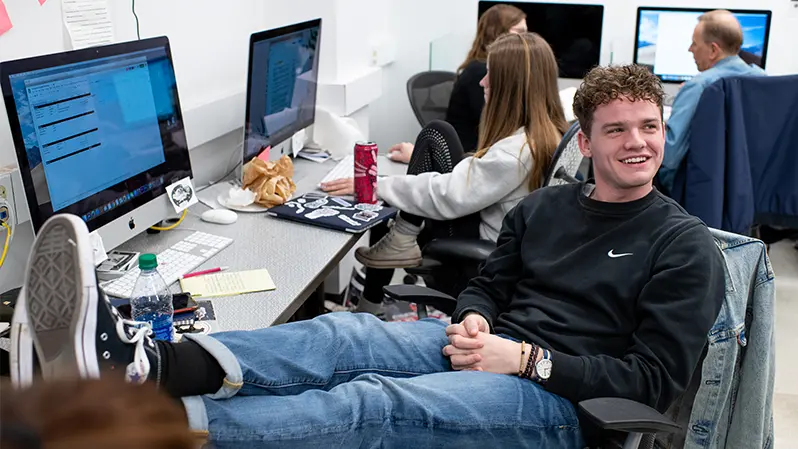
Casey Cascaldo, managing editor for multimedia, talks with a colleague in the newsroom while staffers finish the print edition. Then he’s on deadline to post stories to the website.
Raudins has developed a reputation for covering breaking news around the clock. In August, she was waiting in line at Buckeye Donuts for a gyro at 1:30 in the morning, in her pajamas, when she heard something that sounded like a motorcycle backfiring and saw people hitting the ground.
“I started running toward where people were running away from. In the parking lot of McDonald’s, I saw a guy who had been shot in the leg. My first thought was, ‘This will require clothing,’” says Raudins, who stayed out until 4:30 a.m. covering the story.

Jack Long, right, Lantern TV special projects director, works in the newsroom with Oliver Boch, Arts & Life director of Lantern TV.
While the time commitment may be similar to that of a full-time reporting position, working for The Lantern is definitely meant as a learning experience, says Hunt, the faculty advisor. The veteran reporter for the Cincinnati Enquirer and Columbus Dispatch acts as a mentor for the students, helping them learn everything from how to structure news stories to how to cover thornier issues such as lawsuits.
Lantern editors not only write and edit stories, but they also edit videos, take photos, create podcasts and produce content that lives online.
“For our kids to be competitive and have a career, they need to have all these skills,” Hunt says. “I learned to report and write as a student journalist. I was talking to my old boss at the Dispatch, asking what our candidates need to be competitive for internships, and he said they need to take their own photos, edit their own videos, crunch data and, oh yeah, write stories. Writing is the last thing.”
‘We need them more than ever’
Those diverse skills converge in a meaningful way for the three special projects editors of The Lantern. Each of the editors works on one in-depth multimedia story per semester, reporting to a projects team consisting of Hunt, Harter, Raudins and Abhigyaan Bararia, managing editor for content. Two of the positions are funded through endowments from alumni.
In addition to Hilton’s cold-case story, the special projects team’s Long completed a package about the university’s concealed-carry policy, and Maeve Walsh wrote about Ohio State students who are single parents.
Walsh will depart The Lantern in the spring to become the first Columbus Dispatch Fellow, a fully funded 9-to-5 internship position, while Hilton recently was named a summer intern for The Washington Post. The work the students have done at Ohio State, Hunt says, was key in landing the internships. “The more we can raise the awareness of what we’re doing, the more successful we’ll be in placing interns,” Hunt says.
Editors say the social aspects of working at The Lantern help offset the rigors of the job. “It’s a certain kind of group and relationship you don’t really find in a lot of other places in your college career,” Harter says.
Students order pizzas to share and put names in a hat for a secret holiday gift exchange. On Denim Wednesdays, the editors wear jean jackets, including Dispatch editorial writer and copy editor Herb Grant, who spends a couple hours in the newsroom each print deadline night.
“These guys do a great job, but they don’t have a lot of experience,” says Grant, who advises students on Associated Press style and answers copyediting questions. “It’s hard to cover, say, the Board of Trustees and crack the code of education jargon to help make it understandable.”
Grant enjoys following Lantern editors’ careers after they graduate. “It gives me hope for the future,” he says. “Hardworking journalists like these, we need them more than ever.”
Bararia has an interest in photojournalism and would love to work for an outlet such as Vice or National Geographic. Long says he’d love a career in public media.
Harter will graduate in May and plans to apply for a full-time paid internship at a newspaper or magazine. “I feel like I still have a lot to learn,” she says, “and I’m still figuring out exactly what it is I want to do.”
For her, the allure of journalism is a job that is different every day.
“I wanted something where I could meet lots of people every day. There’s something special about journalism in that sense,” she says. “And I wanted to do something where I felt like I was making at least some kind of difference in the world.”
Keep the presses rolling
If you’re moved by the student work depicted in this story, support The Lantern with a gift. Your donation will help buy new computers, cameras and other equipment; enable Lantern editors and reporters to travel to cover sporting events; and foster the training of new generations of student journalists.


